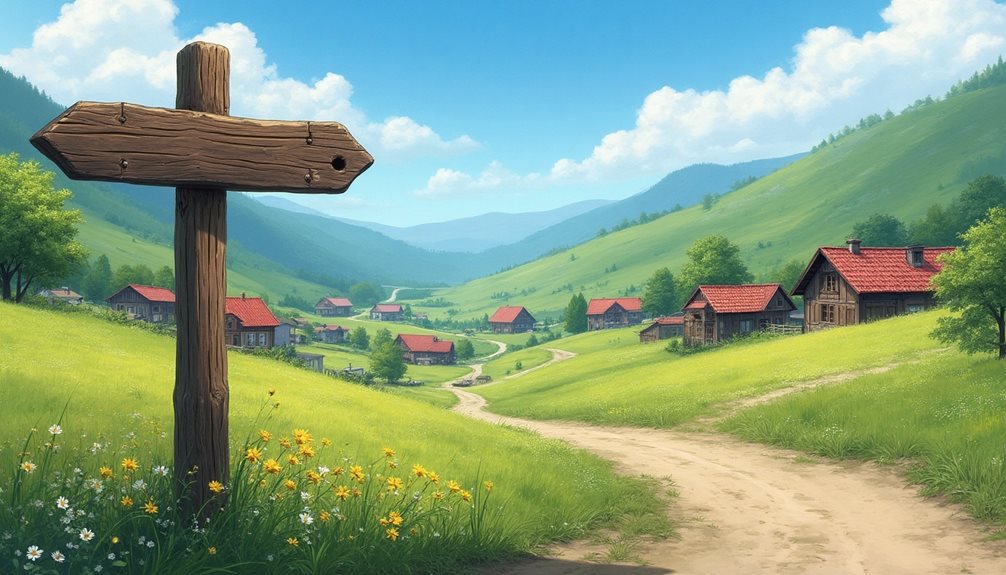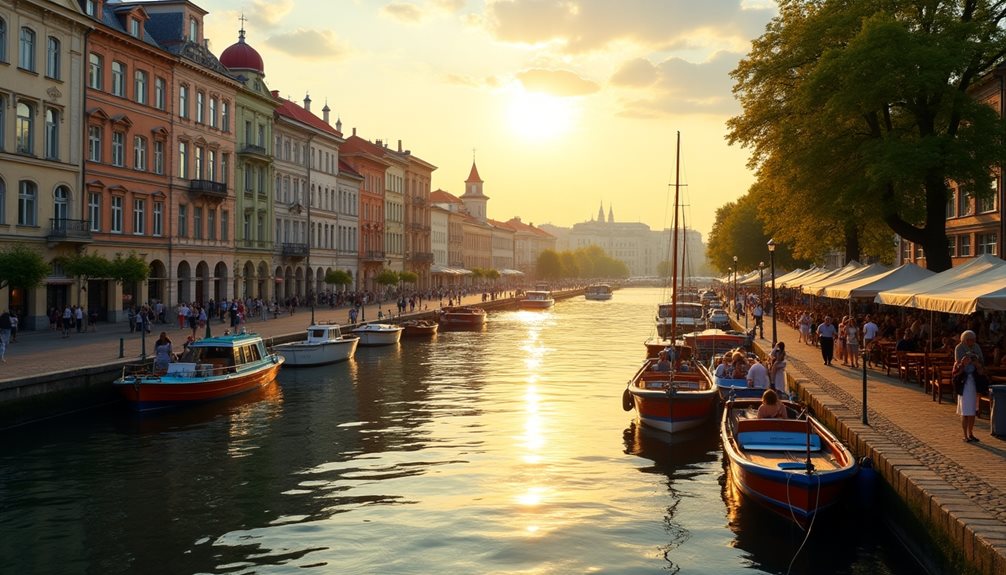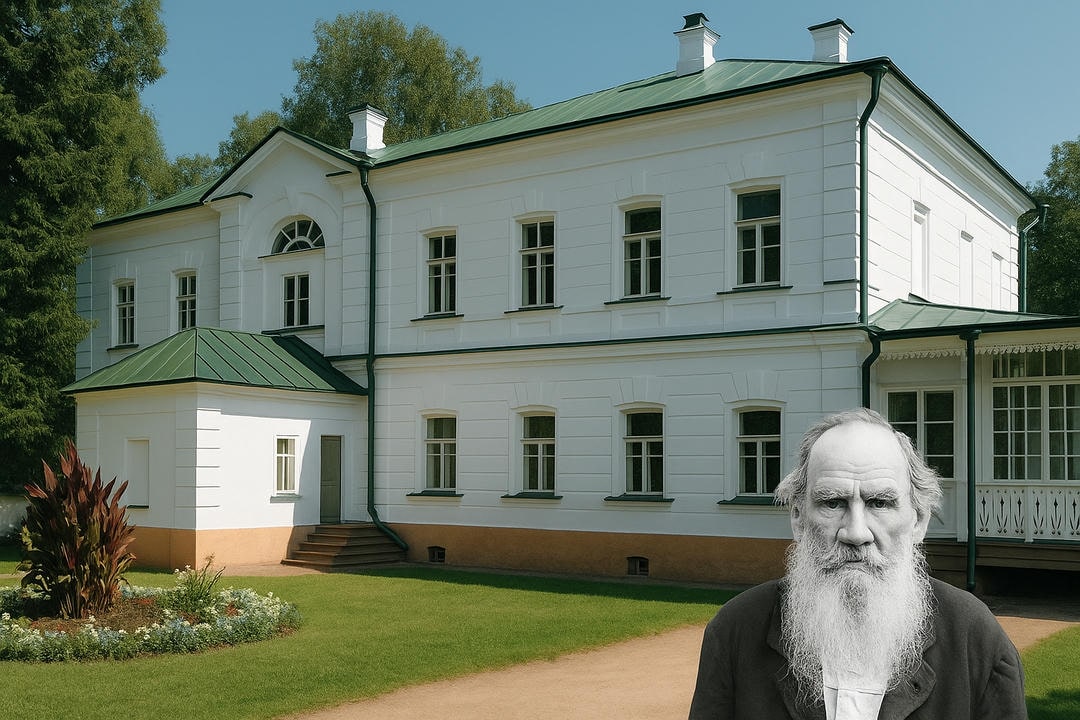The Winter Palace stands as a tribute to the grandeur of the Romanov dynasty, nestled in the heart of St. Petersburg. Its baroque facade and lavish interiors reflect centuries of cultural evolution and imperial ambition. Once a royal residence, it has transformed into a beacon of art and history. Yet, beneath its gilded surface lies a narrative of resilience and change, inviting exploration of its many mysteries and the stories that shaped Russia’s past.
Fascinating Secrets of the Winter Palace
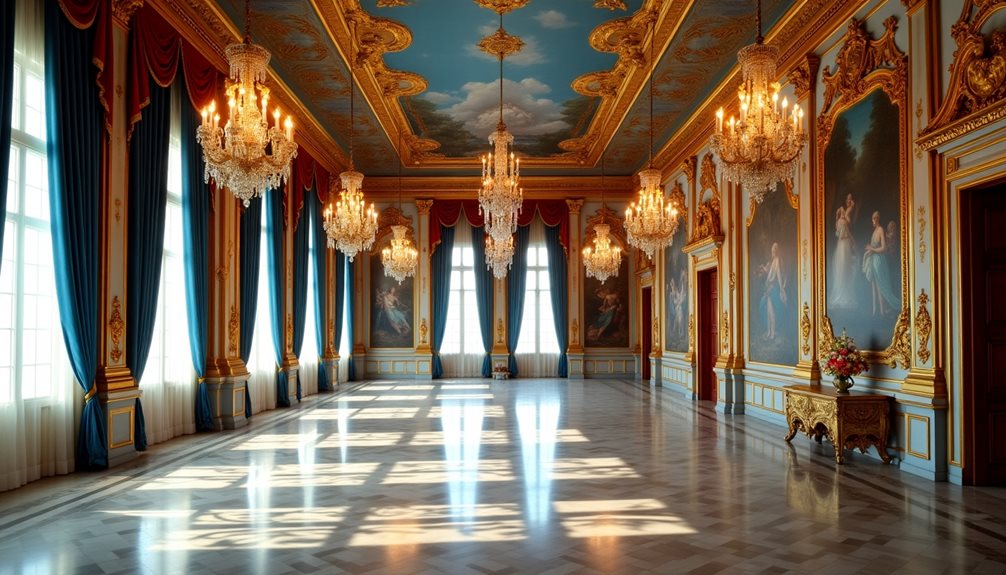
Few places in the world rival the Winter Palace in both scale and intrigue. Rising along the banks of the Neva River, this pastel-green Baroque masterpiece was the official residence of the Russian tsars from 1732 to 1917, commanding the heart of St. Petersburg and serving as a stage for some of the most dramatic episodes in Russian history.
Commissioned by Empress Anna Ioannovna and brought to architectural perfection by Bartolomeo Rastrelli, the palace’s design reflects the ambitions of successive rulers. Rastrelli’s Elizabethan Baroque style—with its ornate facades, monumental staircases, and gilded interiors—set the tone for a residence meant to awe both subjects and foreign dignitaries. The palace’s sheer scale is staggering: it contains over 1,500 rooms, 1,886 doors, 1,945 windows, and 117 staircases, covering more than 60,000 square meters.
Yet beneath the dazzling surface, the Winter Palace conceals a labyrinth of secrets. Hidden passages, designed for the discreet movement of royals and servants, snake through the walls—remnants of a time when palace life was fraught with intrigue and danger. In 1880, the palace narrowly escaped disaster when a time bomb planted by revolutionaries exploded beneath the private dining room, a chilling reminder of the political unrest that simmered beneath imperial splendor.
The palace’s halls have witnessed both lavish celebrations and pivotal moments in history. The Great Hall, or Armorial Hall, hosted grand balls and diplomatic receptions, while shadowy corners provided venues for clandestine meetings that shaped the fate of the empire. It was here, too, that the tides of revolution swept through: the storming of the Winter Palace in 1917 became an enduring symbol of the October Revolution, marking the end of the Romanov dynasty and the dawn of Soviet rule.
The Winter Palace’s interiors are a testament to centuries of evolving taste. While the exterior remained largely unchanged after a devastating fire in 1837, the interiors were redesigned in styles ranging from Neoclassical to Rococo, Gothic, and beyond. The Malachite Drawing Room, with its vivid green stone, stands out as a jewel among the palace’s many ornate chambers.
Today, the palace forms the heart of the State Hermitage Museum, housing one of the world’s greatest art collections. Catherine the Great’s passion for art laid the foundation for this treasure trove, which now includes masterpieces by Leonardo da Vinci and Rembrandt, among countless others. Each room tells a story—not only of imperial luxury but also of the shifting tides of Russian history.
From its hidden corridors to its grand halls, the Winter Palace remains a living chronicle of ambition, artistry, and upheaval. Its walls echo with the footsteps of emperors, revolutionaries, and artists, inviting visitors to uncover the layers of history that continue to shape Russia’s cultural identity.
Engineering and Craftsmanship
The construction of the Winter Palace was a feat of engineering, requiring more than 4,000 artisans and millions of bricks. Its foundations included advanced waterproofing systems to counteract the dampness of the Neva River, ensuring the building’s longevity. Locally sourced materials were complemented by imported marble, malachite, and granite, including the world’s tallest monolithic grey granite columns, now a highlight of the Hermitage Museum housed within the palace.
Center of Russian History
Throughout its existence, the Winter Palace has been at the heart of Russian history. It served as the official residence of the Romanov dynasty from 1732 to 1917, witnessing imperial celebrations, state ceremonies, and pivotal events such as the storming of the palace during the October Revolution—a moment immortalized in Soviet art and film. The palace’s halls and shadowy corridors hosted both lavish festivities and secretive political gatherings, shaping the destiny of the nation.
Artistic and Cultural Legacy
The palace’s interiors, once the height of Rococo luxury, were later transformed with neoclassical and eclectic designs, reflecting changing artistic trends and the preferences of successive rulers. Today, as the centerpiece of the State Hermitage Museum, the Winter Palace houses priceless art collections, including masterpieces by da Vinci, Rembrandt, and countless others, making it a global destination for art lovers and history enthusiasts alike.
Unique Palace Features
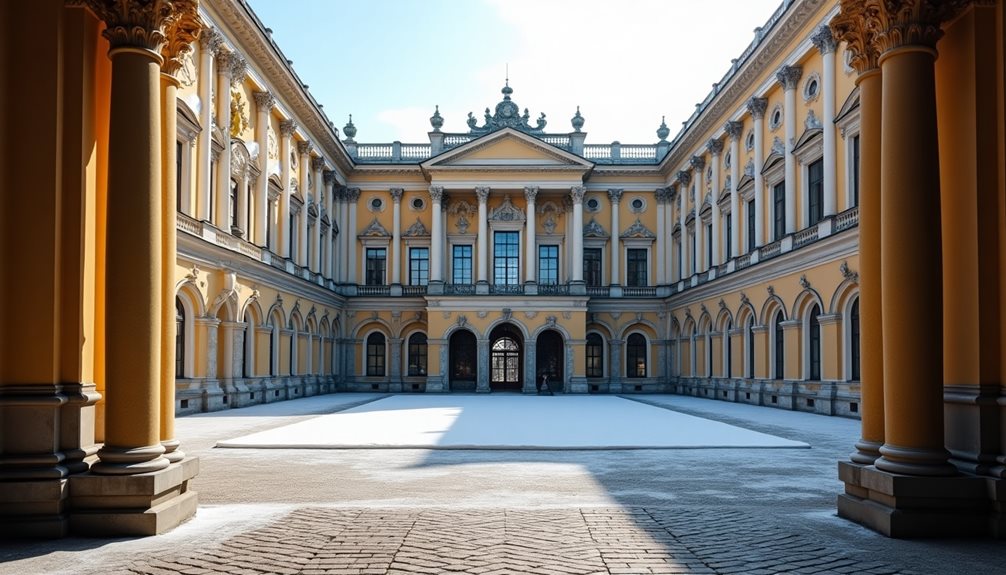
The Winter Palace stands out for its remarkable architectural features, blending grandeur with thoughtful urban planning. At its heart lies a serene internal courtyard, offering a peaceful retreat from the lively city beyond its walls. The palace is also defined by four unique façades, each telling a story of imperial splendor and reflecting the artistic vision of the Romanov era. Strict height limits on neighboring buildings ensure the palace remains the focal point of Saint Petersburg’s skyline, preserving its commanding presence and reinforcing its role as a symbol of Russian heritage.
Life Inside: The Romanovs at Home
Inside the Winter Palace, the Romanov family navigated a world where public spectacle and private life were closely intertwined. While fulfilling their ceremonial roles, the royals also carved out moments of intimacy within secluded apartments. Family traditions and cultural influences shaped their daily routines, balancing the demands of state with personal bonds. This blend of duty and domesticity gave rise to a unique atmosphere, where imperial expectations met genuine moments of connection.
Ceremonies and Celebrations
The Winter Palace was more than a royal residence; it was the stage for Russia’s most significant events. Lavish coronations, diplomatic receptions, and grand balls unfolded in its opulent halls, reinforcing the monarchy’s authority and showcasing aristocratic elegance. Amid these public displays, the daily lives of the tsars and their families played out, revealing the complexities of power, tradition, and personal relationships. The palace thus became a living symbol of an era, where history and heritage converged.
Innovations for Harsh Winters
Surviving the Russian winter required ingenuity, and the palace’s design reflected this necessity. Over 400 stoves were installed throughout the vast rooms, ensuring warmth and comfort even during the coldest months. These heating innovations blended seamlessly with the palace’s ornate interiors, demonstrating a careful balance between aesthetic grandeur and practical needs.
Private Royal Apartments
Each member of the imperial family enjoyed private quarters tailored to their status and preferences. These apartments offered sanctuary from the public eye, fostering a sense of personal space within the palace’s vast expanse. The emperor’s consort and children had their own luxurious rooms, designed to nurture family life and individual identity. These intimate spaces reveal the human side of royal existence, where personal moments unfolded against a backdrop of imperial majesty.
Art and Culture: Birth of the Hermitage
Art and culture flourished within the walls of the Winter Palace, laying the groundwork for what would become the Hermitage Museum.
As a repository of imperial treasures, the palace showcased an artistic legacy rich in cultural exchange. The collection, nurtured by successive rulers, became a symbol of Russia’s dedication to historical preservation.
Hermitage exhibitions not only displayed exquisite artworks but also fostered connections between diverse cultures, engaging audiences with the narratives behind each piece.
This vibrant interplay of art and history transformed the Winter Palace into a sanctuary of creativity, ultimately leading to the establishment of one of the world’s premier museums.
Hermitage: Catherine’s Artistic Masterpiece
Catherine the Great’s fervent dedication to the arts greatly shaped the cultural landscape of Russia, culminating in the establishment of the Hermitage Museum. Driven by Enlightenment influence, she meticulously curated Catherine’s Collection, transforming her private art gatherings into a public institution.
This cultural patronage reflected her vision of a society enriched by artistic expression and knowledge. The Hermitage evolved beyond mere storage of artworks; it became a symbol of Russia’s artistic legacy, inviting global admiration.
Cultural exchange flourished within the opulent halls of the Winter Palace, where the influence of European intellectualism and artistry converged.
The court life, steeped in French influence, adopted the language as a means of communication, creating a unique cultural identity.
Artistic salons became vibrant venues for the exchange of ideas, where poets, philosophers, and artists gathered to engage in philosophical discourse.
This dynamic environment fostered a spirit of innovation, allowing Russian thinkers and creators to dialogue with their European counterparts.
The Winter Palace, consequently, not only served as a royal residence but also as a crucible for profound cultural exchanges.
Witness to Revolution and Change
As the currents of history swept through Russia, the Winter Palace emerged as a silent witness to monumental upheavals and transformative change.
This grand edifice, steeped in imperial legacy, stood resolute amid social upheaval, embodying the clash of revolutionary ideals against centuries of autocratic rule.
It became a backdrop for cultural transformation, as artists and thinkers sought to redefine the nation’s identity.
Within its ornate walls, the echoes of dissent reverberated, marking its historic significance in the narrative of freedom.
The Winter Palace transcended its architectural splendor, becoming a symbol of the aspirations and struggles that shaped modern Russia.
Revolutionary fervor surged through the streets of Saint Petersburg in 1917, culminating in the dramatic storming of the Winter Palace, an event that would become emblematic of the October Revolution.
This act of defiance embodied revolutionary symbolism, reshaping historical narratives around collective struggle for freedom.
The palace, once a bastion of imperial power, became a canvas for cultural impact, inspiring art representations that captured the spirit of change.
As political transformations unfolded, the storming not only marked the end of an era but also ignited a fervent yearning for liberation that resonated across generations, forever altering Russia’s identity.
Imperial Residence Becomes Public Museum
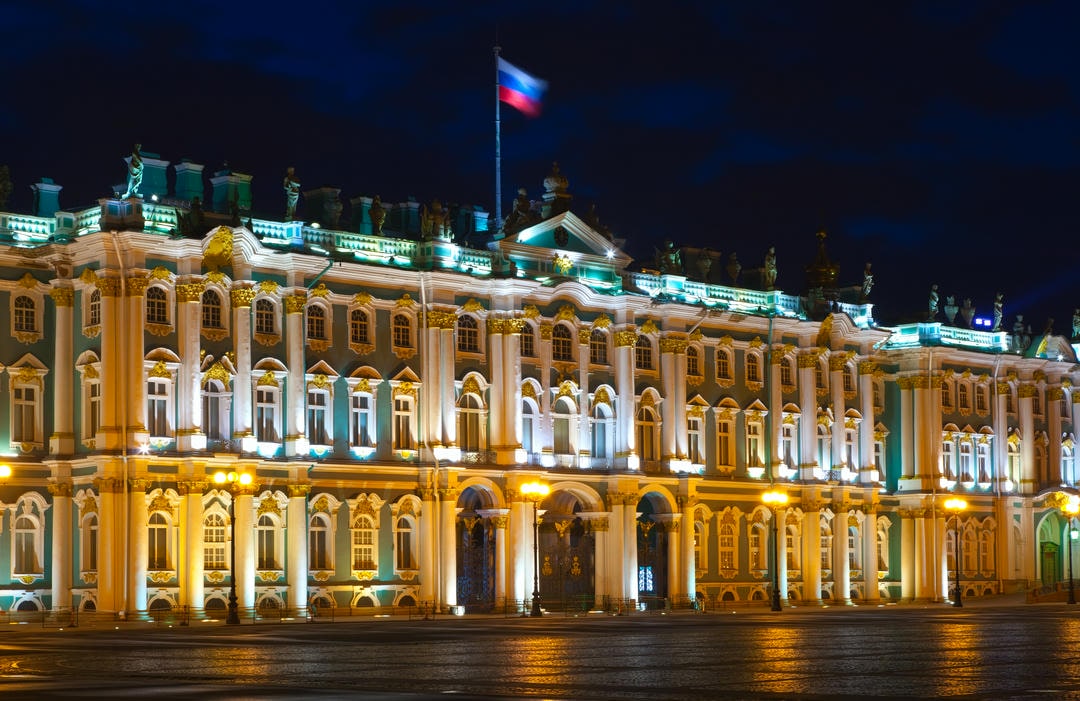
The change of the Winter Palace from an imperial residence to a public museum represents a profound shift in Russia’s cultural and political landscape following the fall of the Romanovs.
This transformation emphasized the importance of cultural preservation and democratized access to historical significance, allowing the public to engage with the nation’s rich heritage.
Effective museum management has been essential in enhancing the visitor experience, showcasing the palace’s architectural restoration while educating guests about its storied past.
While many historical sites struggle to maintain their integrity amid the pressures of modern tourism, the Winter Palace has undergone a series of meticulous restorations that not only preserve its architectural grandeur but also enhance its relevance in contemporary society.
These restoration techniques have revitalized the palace, integrating architectural innovations that reflect modern sensibilities. The cultural significance of the Winter Palace is further amplified through modern exhibitions that engage visitors, offering immersive experiences that transcend time.
As a result, the palace stands resilient, drawing a diverse audience enthusiastic to explore its rich history while celebrating the dynamic interplay between past and present.
The 1837 Fire
Engulfed in flames in 1837, the Winter Palace faced a devastating fire that threatened its very existence.
Yet this catastrophe ultimately led to a transformative restoration. The extensive fire damage prompted innovative restoration techniques, ensuring the palace maintained its external grandeur while modernizing the interiors.
Architects embraced historical significance, combining classical elements with contemporary comforts, thereby enhancing the palace’s cultural impact.
This restoration not only preserved the iconic façade but also revitalized the spaces within, making them suitable for future generations.
The Winter Palace emerged from the ashes, embodying resilience and a renewed commitment to Russia’s rich artistic heritage.
Enduring Symbol of Culture
The Winter Palace has withstood centuries of wars, revolutions, and political upheavals, emerging as a powerful symbol of Russia’s complex history and cultural resilience. Its carefully preserved architecture invites visitors to connect deeply with the past, while its vibrant role today as a center for arts and education brings that history to life. The palace’s grand halls buzz with tourists and scholars alike, where the legacy of imperial Russia meets contemporary creativity—offering a timeless space that celebrates both struggle and the enduring spirit of the nation.
Winter Palace: Russia’s Living Legacy
Majestically perched on the Neva River, the Winter Palace embodies the resilience and complexity of Russia’s rich history. Beyond its imperial grandeur, the palace showcases architectural styles that have deeply influenced Russian aesthetics. Within its walls, moments of royal celebration and revolutionary upheaval have woven an enduring artistic legacy. Today, as part of the Hermitage Museum, it welcomes visitors worldwide to explore Russia’s cultural heritage. The Winter Palace remains a powerful symbol of imperial power, architectural brilliance, and cultural depth, captivating millions on Palace Square each year.

